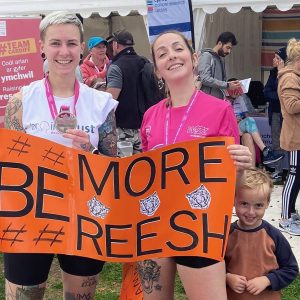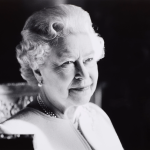 We’ve been catching up with Donna, following her Cardiff Half Marathon challenge to hear how it felt to take part.
We’ve been catching up with Donna, following her Cardiff Half Marathon challenge to hear how it felt to take part.
Donna signed up with Team brainstrust earlier this year, taking inspiration from her friend Areesha who was sadly lost to a brain tumour this year. Donna describes Areesha as someone who, ‘never shied away from a challenge’. Inspired by Areesha, Donna chose to set herself an incredible fundraising target of £1,500.
‘Turns out running a half marathon is pretty damn hard.
Thanks to everyone that donated to my fundraising efforts. Thank you to everyone who has asked about my training, checked in on me and said good luck to me. Thank you to everyone that came out and cheered today. Thank you to everyone that told me I could do it even when I didn’t think it I could. Thank you to everyone who’s asked about why I’m doing it and let me talk to them about Reesh. And a special thanks to Laura for being the best training buddy I could have asked for. I’m so glad you let me tag along with you on this ride.
And lastly to Reesh, I miss you so much but it felt like I had you with me today. And that in itself was worth this entire journey.
This photo is of me and Laura with a sign her husband made to cheer us along. One of the things we talked about after Reesh dying was how we wanted to be more like her, say yes to things and generally just really go for it and enjoy opportunities that arise that we might not have said yes to before. And because of that we started saying “be more Reesh”.
Thank you so much for your support along this journey. I’m so glad I picked brainstrust to fundraise for.’

Donna you’re an inspiration – we can’t thank you enough for your amazing support and for smashing your fundraising target by raising a huge £1630!
Prior to taking part in the Half Marathon Donna shared her thoughts on her upcoming challenge with us;
The Cardiff Half Marathon takes place on 2 October, and although Donna has admitted she’s, ‘most definitely not a natural runner, or an experienced one!’, she’s been training hard and with less than a month to go we invited Donna to share her motivation for running and to reflect on her training so far;
‘I’ve been sitting in front of a blank screen for the last half an hour trying to figure out how to start to write what motivated me to run the Cardiff Half. And with tear-stained cheeks, I reluctantly admit, it was grief. That kind of grief that is all encompassing and physically painful. That kind of grief that just makes you wish there was something, anything you could do to make it go away, but there isn’t.
On February 19th 2022 I lost my dear friend Areesha to a brain tumour that she was diagnosed with less than a year before. Reesh was not like anyone I’ve met before, she was wildly extroverted, loud, dramatic and absolutely hilarious. And she said yes to everything. Once she flew to New York, then drove to Philadelphia on her own to meet up with our roller derby team and play the last 2 games on our first USA tour. Then flew back home 48 hours later. To say Reesh lived life to the fullest is an understatement; she packed more in 35 short years than most do in a much longer lifetime. And I’m so glad she did.
I knew I wanted to do something to honour her ‘say yes’ attitude and when my friend Laura said she was running the Cardiff Half in memory of Reesh I asked if she wanted someone to do it with her. And the next thing I know I’m signing up to run 13.1 miles having not run in over 6 months and never having run more than 7 miles in my entire life. But one thing I knew for sure was that if Reesh was still here she’d be our biggest cheerleader. 
Training has been full of ups and downs. It started off fairly well and I was following my training plan and it wasn’t too hard to motivate myself to put my trainers on and get some miles in. But unfortunately, after avoiding Covid for 2.5 years my luck finally ran out. It hit me pretty hard and I wasn’t able to run, or exercise at all, for five very long weeks. But patience (not one of my virtues) prevailed and I managed to lace my trainers back up towards the end of August and restart training. It’s been humbling to not see the progression I wanted to. I’ve had to dramatically adjust my goals for the race but it really has brought me back to the bigger picture of why I’m running. I am running for Reesh, for someone that was so incredibly full of life, so ready to take on any challenge and so willing to help her friends when they needed it. And I guess this is what running the Cardiff Half for brainstrust feels like to me, helping a friend.
I am so incredibly grateful for the generosity people have shown with their donations. Whilst I am nervous about the race, there is no doubt in my mind I can do it. And on the day, when I hit that inevitable wall, I’ll think of Reesh cheering me on and every single person who has supported me along the way.’
We’re delighted to welcome Donna to Team brainstrust and want to send a big thank you to everyone supporting her along the way.
You can catch up with Donna’s training and fundraising by clicking here.
Go team!





